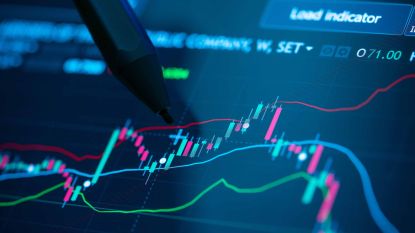Stocks spent most of the day lower Wednesday, as investors fretted about the Federal Reserve’s future rate-hike plans. While a second day of congressional testimony from Federal Reserve Chair Jerome Powell failed to provide any additional fireworks, investors focused on more signs of a strong labor market. However, a late burst of buying power helped two of the three indexes climb into positive territory by the close.
The major indexes each fell more than 1% Tuesday after Powell, in his semiannual appearance in front of Congress, suggested the Fed is prepared to keep raising interest rates if economic data continues to come in strong. And today’s batch of relatively strong jobs data kept stocks under pressure for most of the day. Specifically, an early morning employment report from ADP showed the private sector added 242,000 jobs in February. Not only was this more than the 119,000 jobs added in January, but it was much higher than economists were expecting.
Sign up for Kiplinger’s FREE Investing Weekly e-letter for stock, ETF and mutual fund recommendations, and other investing advice.
Subscribe to Kiplinger’s Personal Finance Be a smarter, better informed investor.
Save up to 74%
Sign up for Kiplinger’s Free E-Newsletters Profit and prosper with the best of expert advice on investing, taxes, retirement, personal finance and more – straight to your e-mail.
Profit and prosper with the best of expert advice – straight to your e-mail.
The resilience of the labor market was also seen in the release of the latest Job Openings and Labor Turnover Survey (opens in new tab) (JOLTS). While job openings decreased to 10.8 million in January from 11.2 million in December, this was more than economists were anticipating. Additionally, the number of hires and total separations (quits plus layoffs) were relatively unchanged month-to-month. Both data points come ahead of the Labor Department’s highly anticipated nonfarm payrolls report, which will be released Friday morning.
“Federal Reserve Chairman Jerome Powell’s recent statements regarding the potential need for the central bank to take more aggressive actions to hamper inflation have been reinforced with stronger-than-expected labor market data from both ADP and JOLTS this morning,” says José Torres, senior economist at Interactive Brokers. Upcoming data slated to be released over the next two weeks – including Friday’s jobs report, the consumer price index and retail sales – could make the case for a 50 basis point rate hike a the next Fed meeting, Torres says, adding that “odds of a 50bp hike later this month have risen to 72% while terminal rate expectations jumped to 5.63% for October.”
A round of disappointing earnings reports also weighed on sentiment for most of the session. Stitch Fix (SFIX (opens in new tab), -0.4%) slipped after the online clothing company said its fiscal second-quarter loss more than doubled compared to the year-ago period. Revenue and active subscribers were also down on a year-over-year basis.
Meanwhile, United Natural Foods (UNFI (opens in new tab)) plunged 28.1% after the grocery wholesaler said fiscal second-quarter earnings were down 71% year-over-year to 31 cents per share. “Profits were challenged as we did not repeat the significant level of procurement gains from rapidly accelerating inflation and inventory gains, due to supply chain volatility, that we experienced in the second quarter of last year,” said Sandy Douglas, CEO of UNFI, in the company’s press release. As a result, the company lowered its fiscal 2023 profit guidance and removed its fiscal 2024 targets.
After spending much of the day in negative territory, both the Nasdaq Composite (+0.4% at 11,576) and the S&P 500 (+0.1% at 3,992) closed higher thanks to strength in semiconductor stocks. The Dow Jones Industrial Average, on the other hand, ended the session down 0.2% at 32,798.
Apple stock’s impressive 20-year returnVolatility and an uncertain market create exciting opportunities for stock pickers. While average retail investors don’t necessarily have the same access to research and insight that Wall Street’s deep-pocketed players have, they can still follow the moves billionaire investors like Phillippe Laffont and David Tepper make during the market’s ups and downs. They can also take a look at the stocks Warren Buffett is buying and selling.
But, as we said recently, sometimes it just boils down to math when looking for the best stocks to buy. Recently, we highlighted the impressive return Nvidia (NVDA (opens in new tab)) stock has delivered over the past 20 years, and we decided to repeat the experiment with Apple (AAPL (opens in new tab)). Not only has AAPL been one of the best stocks of the past 30 years, but those who invested $1,000 in Apple stock 20 years ago would be enjoying a six-figure return today.
